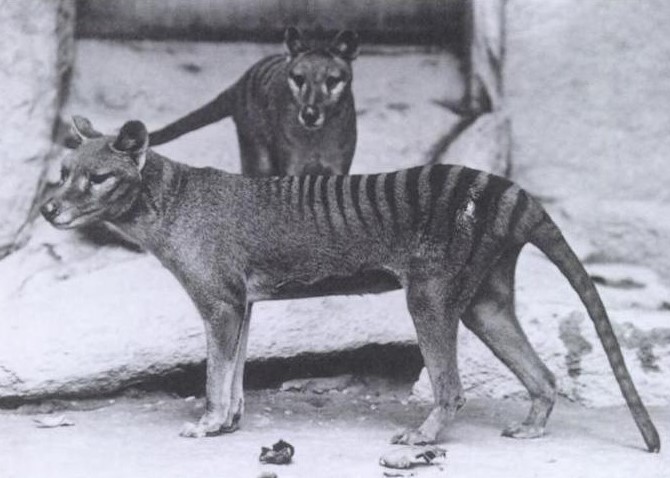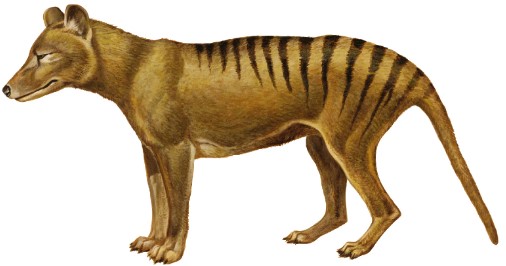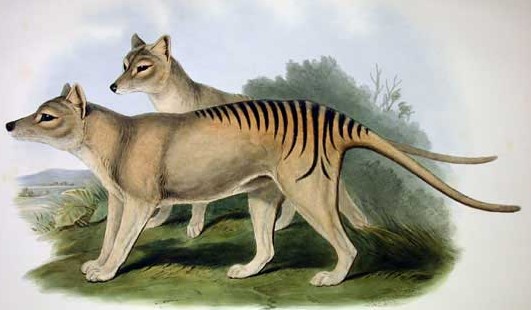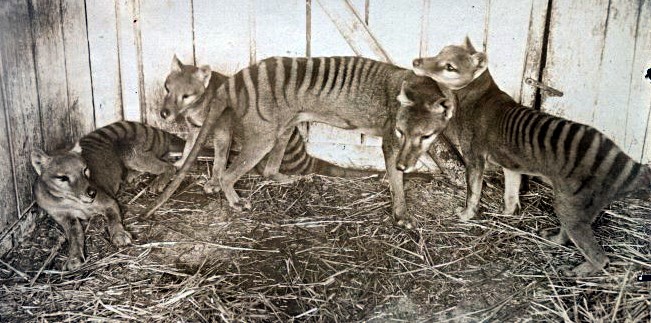







The thylacine is an extinct carnivorous marsupial that lived in mainland Australia and New Guinea. It went by many names like the marsupial wolf, Tasmanian Tiger, or Tasmanian wolf. They went extinct because European settlers killed them. After all, they thought they had killed their sheep. The last known specimen died in a private zoo in Hobart in 1936. The last one outside Australia died at a zoo in London in 1931.
Thylacines had yellowish-brown fur with 13 to 19 dark stripes on the back and rump like a tiger. It had a skull that was shaped like a wolf. It also had hind legs that were longer than the forelegs. The female had a pouch with four teats that faced backward just like a wombat(Vombatus ursinus) where the female could carry two to four young at a time. The tail was very thick at the base and tapered to the point.
The thylacine is in the order of Dasyuromorphia along with numbats and quolls. The thylacine was a nocturnal and crepuscular hunter. It spent the daylight hours in small caves and hollow tree trunks. The female would carry the young in a pouch for three months and the young were hairless and blind. When the young had their eyes open and fur grown, they left the pouch. After they left the pouch, the juveniles would stay in the den while their mother hunted for food. Their life span in the wild was estimated to be 5 to 7 years but some of them in captivity lived 9 years. The thylacine was carnivorous. In the wild, they mostly preyed on large ground-dwelling birds like the Tasmanian nativehen(Tribonyx mortierii). On the mainland, they ate a large diet of megapodes, ratites like the emu(Dromaius novaehollandiae), and dromornithids. At the time of European settlement, they mostly preyed on the extinct Tasmanian emu which was smaller than the common emu.
As European settlers got into mainland Australia, they carried sheep along with them. They shot the thylacines because they thought that these creatures killed their sheep. Other factors included the introduction and competition with the dingo, disease, and habitat destruction. The last thylacine died in the Hobart Zoo in 1936. The last one outside Australia died at the London Zoo in 1931.
Many people have been trying to bring back this extinct marsupial through cloning. Finally, an international team of geneticists successfully sequenced the DNA of this extinct marsupial. That lead to discussions of possibly cloning the thylacine if they had the right tools. The University of Melbourne Thylacine Integrated Genomic Restoration Lab works with partners to resurrect the thylacine and reintroduce it to Tasmania.